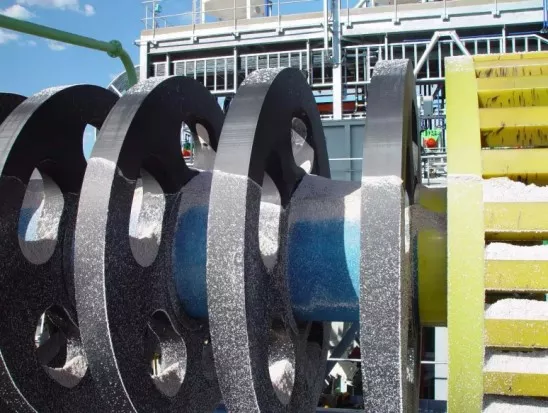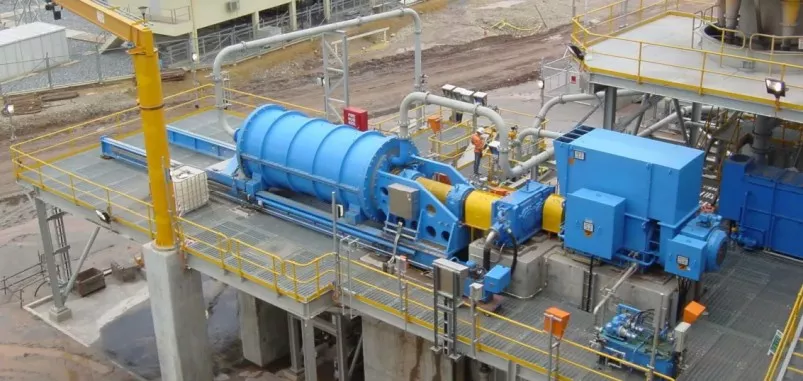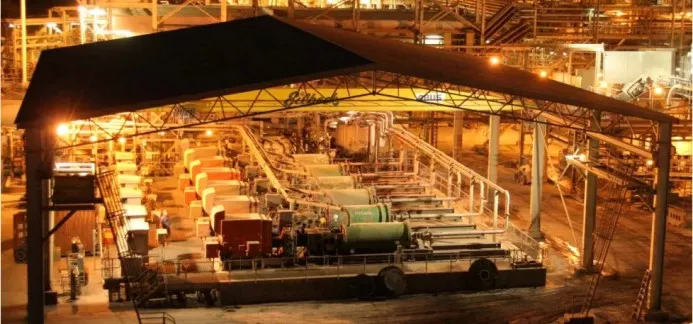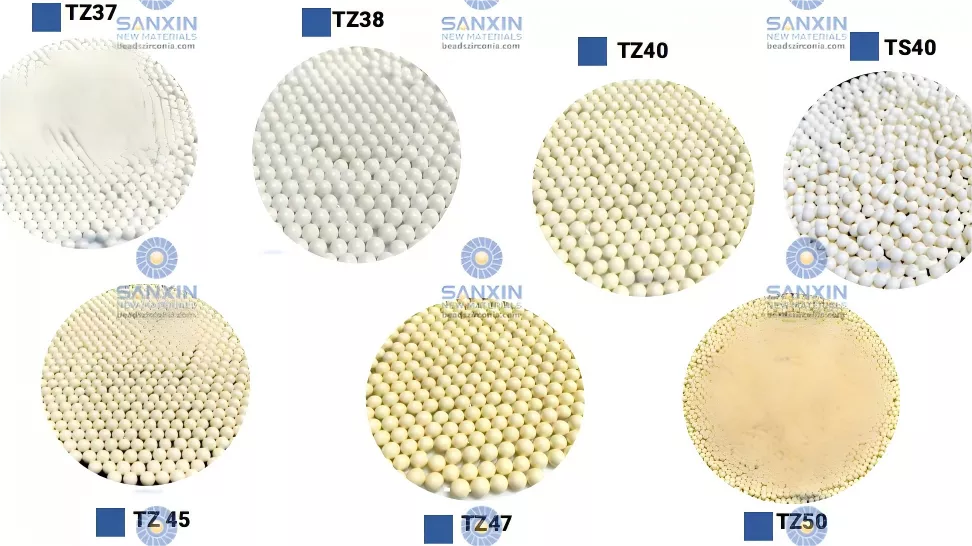Inthehigh-pressurearena of global mineral processing, where ore grades continue to decline by an average of 2-3% annually and energy costs have spiked 15-20% since 2023 due to geopolitical tensions and net-zero transitions, ceramic grinding balls are not just an upgrade—they're a survival strategy. As of October 2025, the International Council on Mining and Metals (ICMM) reports that comminution alone devours up to 50% of a mine's total energy budget, pushing operators toward innovations that slash power use while boosting throughput. Enter ceramic grinding balls (also known as ceramic grinding media or beads): inert, high-hardness spheres crafted from advanced materials like alumina (Al₂O₃), zirconia (ZrO₂), or zirconium silicate (ZrSiO₄), delivering particle sizes down to 5-7 microns with wear rates 1/50th that of steel equivalents.

Pioneered in stirred mills like Glencore's IsaMill since the late 1990s, these balls have evolved from niche pharma tools to industrial powerhouses, enabling 20-50% energy savings and recoveries exceeding 95% in refractory ores. Drawing on landmark implementations at Kalgoorlie Consolidated Gold Mines (KCGM) and McArthur River, plus 2024-2025 breakthroughs like zirconia-toughened alumina (ZTA) hybrids and AI-optimized media mixes, this expanded SEO-optimized guide delves deeper into ceramic grinding balls performance—from wear resistance to kinetics—and their applications in mineral processing. With the global ceramic grinding media market surging to USD 1.2 billion in 2024 and projected to hit USD 2 billion by 2033 at a 5.36% CAGR, explore how these balls are grinding toward sustainability in an era of critical minerals demand. Whether you're retrofitting IsaMills for lithium circuits or tackling pyrite-locked golds, this 8,000-word deep dive equips you with actionable insights for 2025's mining renaissance.
Ceramic grinding balls represent the pinnacle of materials science applied to comminution, engineered for environments where contamination is costly and efficiency is king. Unlike traditional forged steel balls (density ~7.8 g/cm³, prone to corrosion and iron leaching), ceramics boast densities of 3.2-6.0 g/cm³, Mohs hardness ratings of 7.5-9.5, and sphericity exceeding 93%, ensuring uniform stress distribution in high-shear stirred mills.
Modern ceramics are sintered at 1,400-1,800°C, fusing oxides into unbreakable matrices:
Alumina de alta pureza (92-99% Al₂O₃): The economical staple, with Vickers hardness 1,200-1,500 and density 3.6-3.9 g/cm³. Ideal for moderate-abrasion applications like quartz or cement clinker grinding, where it achieves 80-90% of steel's impact force at half the wear. In 2025, nano-alumina variants (particle size <100 nm) enhance fracture toughness by 25%, per recent DataHorizzon Research reports.
Zircônia estabilizada com ítria (Y-TZP, 94-99% ZrO₂): The premium performer at 6.0 g/cm³ density and 1,200 HV hardness, offering 2-3x steel's lifespan in ultra-fine grinding (UFG). Its phase stability prevents cracking under cyclic loads, crucial for IsaMill's 20 m/s tip speeds. 2024 advancements include fluorite-doped zirconia, reducing brittleness by 15% for high-vibration ops.
Zirconia-Toughened Alumina (ZTA): A 2025 hybrid star (70-90% Al₂O₃ + 10-30% ZrO₂), blending alumina's cost with zirconia's toughness. Bulk density hits 4.2 g/cm³, wear drops to 0.01 g/kWh, and it's gaining traction in metal mining for its 30% longer lifespan vs. pure alumina. Shandong Titan Industrial Ceramics highlights ZTA's role in boosting throughput 10-15% in ball mills.
Zirconium Silicate (ZrSiO₄): Budget-friendly at 4.5 g/cm³, Mohs 7.5, for non-ferrous ores where density matters less than purity.
Emerging Nano-Ceramics and Composites: 2025's frontier, incorporating carbon nanotubes or graphene for 40% higher thermal shock resistance. These enable hybrid steel-ceramic mixes, grinding coarse feeds (>400 µm) in IsaMills with 50% energy cuts.
Sizes range from 0.5 mm beads for sub-5 µm UFG to 20 mm balls for primary grinding, with tolerances ±0.1 mm ensuring consistent performance.

What elevates ceramic grinding balls performance? Physics and chemistry converge:
Hardness and Fracture Toughness: Knoop hardness 1,000-1,500 kg/mm² resists abrasion from silicates or sulfides, extending media life 5-10x steel (18-48 months vs. 6-12). In stirred mills, this translates to 0.01-0.05 g/kWh wear—negligible vs. steel's 0.5-1 g/kWh.
Inércia Química: pH-neutral (1-14 stability), zero iron elution prevents preg-robbing in gold cyanidation (saving 2-5% recovery) and galvanic corrosion in base metals.
Density and Sphericity: Lower mass reduces overgrinding of fines, yielding sharper PSDs (e.g., 96% <2.5 µm liberation at McArthur River). Roundness >93% minimizes dead zones, enhancing shear efficiency.
Estabilidade Térmica: Up to 1,200°C tolerance suits hot-climate ops, like Australia's Pilbara iron ore sites.
In KCGM's pyrite concentrates (40-50 g/t Au), 6 mm alumina beads hit P80 10-12 µm at 80 kWh/t—50% below ball mills—while avoiding Fe hydroxides that spike cyanide use 47%. 2025 market data from Archive Market Research pegs ceramic media's edge in efficiency at driving a USD 450M alumina segment to USD 700M by 2033.
The saga of ceramic grinding balls traces back to 1980s manufacturing, where Netzsch's horizontal bead mills ground pigments to 1 µm using exotic zirconia. Minerals' pivot came in 1988: Xstrata (now Glencore) battled fine-grained Pb/Zn ores at Broken Hill and McArthur River, needing 7 µm grinds for flotation. Steel media contaminated slimes, depressing recoveries 10-15%; tower mills guzzled >150 kWh/t below 20 µm.
1994's breakthrough: The first IsaMill at Mount Isa, retrofitted with 3 mm ceramic beads, scaled batch tech to 1.1 MW continuous ops. Inert media unlocked 85% Zn recovery, debunking "fines don't float." By 2001, KCGM's UFG circuit—two IsaMills treating 20 tph refractory flotation tails—achieved 92% Au extraction sans roasting's SO₂ woes.
2010s scaling: Ceramic costs plummeted 60% via Chinese production, enabling >150 IsaMills worldwide by 2025. Glencore's 2023 Hudbay trials at Stall Mill slashed secondary energy 50% with 8-10 mm ZTA media on coarser feeds (F80 400 µm). X posts from Titan Industrial Ceramics (Oct 2025) tout ZTA upgrades in Australian mines for 10% throughput gains.
2020-2025 surge: Post-COVID supply chains favored ceramics' low logistics (lighter than steel). Nano-ZTA hybrids, per ScienceDirect's 2024 mixtures study, blend 70% ceramic/30% steel for 40% energy savings in tumbling mills—extending apps beyond stirred setups. Market forecasts: USD 3.5B grinding ball sector grows 5% CAGR, ceramics claiming 25% share by 2030.
This evolution cements ceramics as the inert backbone of modern UFG, processing 100+ Mtpa globally.
Ceramic grinding balls performance isn't anecdotal—it's quantifiable, rooted in stress models and pilot data. Kwade's equation governs: Stress Intensity (SE) = (d_m³ × v² × ρ_m) / K, where d_m = media diameter, v = tip speed, ρ_m = density, K = constant. Smaller d_m (1-6 mm) amplifies SE for attrition-dominant breakage, ideal for <10 µm targets.
Ceramics' microstructure—dense, crack-free lattices—yields wear 1/5-1/50th steel's. Alpha Grinding Media's 2025 benchmarks: Alumina at 0.02 g/kWh in IsaMills, zirconia 0.01 g/kWh. Morphology scans show beads retain >90% sphericity after 6 months, vs. steel's 70%. In Pulang Mine's vertical mills, nano-ZTA cut liner erosion 30%, per LinkedIn case studies.
Table 1: Expanded Wear Comparison (2025 Data)
Media Type
Wear Rate (g/kWh) | Liner Life Extension | Contamination (ppm Fe) | Cost Savings/Ton Ore | |
Forged Steel | 0.5-1.0 | Baseline | 500-1,000 | - |
High-Alumina | 0.02-0.05 | 2-3x | <10 | 15-20% |
Y-TZP Zirconia | 0.01-0.03 | 3-5x | <5 | 25-35% |
ZTA Hybrid | 0.015-0.04 | 2.5-4x | <8 | 20-30% |
Source: Adapted from ScienceDirect mixtures analysis.
Stirred mills with ceramics hit 200-400 kW/m³ intensity, 25-50% below ball mills' 20 kW/m³. Glencore's 2024 Hudbay trials: 8 mm ZTA media on Zn ores saved 50% specific energy (40 kWh/t vs. 80 kWh/t), processing 2 Mtpa. BeadZirconia's feasibility study (Feb 2025) projects 3,000 MWh/year savings in 1 Mtpa ops, equating to USD 300K at 2025 rates.
2025 benchmarks: Mixtures (70% ceramic/30% steel) optimize for hard ores, per Powder Technology, yielding 15% finer PSDs and 40% less power for -38 µm products. In KCGM, this narrowed UFG-roasting gaps to 3-5% recovery.

Attrition shears lattices, creating defect sites that accelerate leaching (e.g., pyrite oxidation at ambient temps). McArthur River data: 3 mm zirconia liberated 96% <2.5 µm particles, +15% Zn recovery. For refractory golds, arsenopyrite poses challenges (80% vs. 92% pyrite), but ZTA mitigates via higher SN (stress number).
Pilot kinetics (2024 Minerals Engineering): ZTA at 80% fill rate hit 79.89% -38 mm fraction in 20% less time than alumina alone. X discussions from Mining Doc (Oct 2025) emphasize impact-attrition balance in ball mills.
Challenges? Acid-sensitive zirconia in HF pulps—alumina hybrids solve this, per 2025 Zoneding reviews.
Ceramic grinding balls advantages compound across TCO (total cost of ownership), ESG, and metallurgy, making them indispensable in 2025's USD 6.53B grinding media market (up 48% by 2033).
Initial cost? 2-3x steel/kg, but TCO drops 20-40% via longevity and efficiency. Chemshun's CS32 ZTA: USD 10-15/t ore savings in media alone, plus 30% less downtime (95% uptime in IsaMills). Glencore's energy math: 50% cuts = USD 5-10M/year for 500 ktpa plants. North America mining apps project 15% ROI acceleration.
Zero heavy metals in tailings aligns with EU 2025 battery regs; 2,000 t CO₂/Mt ore savings via lower power. Inertness curbs acid mine drainage—critical for sulfides. Titan Ceramics' X post (Oct 2025): ZTA's cleaner grind reduces CN use 47% in golds.
No Fe contamination lifts PGM recoveries 5-10% (Anglo Platinum); sharp PSDs minimize slimes, aiding flotation. Scalable to 200 tph in M50,000 IsaMills. Drawbacks? Impact brittleness in SAG—hybrids fix this, per 2024 ScienceDirect.
In battery minerals, purity adds USD 50/t value for spodumene Li₂O.

Ceramic grinding balls applications transcend stirred mills, invading tumbling and vertical setups for diverse ores.
KCGM's flowsheet: 6 mm ZTA in IsaMills → 92% Au at 10 µm, $62/t opex. For arsenopyrite, 2025 pilots blend ZTA-steel for 85% recovery. Base metals: McArthur River's five M3000s with zirconia process 1 Mtpa Pb/Zn, +15% grades.
Zoneding's 2025 top mills use 20 mm alumina for -75 µm iron, cutting energy 25%. Cement clinkers benefit from ZTA's low heat generation.
HIGmills with 0.5-3 mm zirconia grind spodumene to 5 µm, unlocking 98% Li recovery. 2025 Adelaide Exhibition highlights (Titan X, Sep 2025): ZTA for Ta/Nb tailings reprocessing. Recycling: Ceramics handle e-waste Cu without contamination.
Table 2: Application Matrix (2025)
Ore Type
Mill Type | Ceramic Variant | P80 Target (µm) | Key Benefit | |
Refractory Au | ZTA/Alumina | 7-12 | 90%+ Recovery | |
Pb/Zn Sulfides | IsaMill | Zirconia | 7 | +15% Flotation |
Spodumene (Li) | HIGmill | Nano-Zirconia | 5-10 | Purity for Batteries |
Iron Ore | Moinho de Bolas | Alumina | 75 | 25% Energy Save |
2001-2025: Two IsaMills evolved to ZTA media, treating 20 tph pyrite. 2024 leach tweaks (Pb(NO₃)₂ dosing) + ceramics dropped CN 47%, recovery +2%. Opex: $24/t milling; emissions down 20%.
Glencore's NT site: MT1 ZTA (Magotteaux) grinds SAG discharge directly, 35 kWh/t savings, 96% <2.5 µm. 2025: Two M5000 adds for 20% throughput.
China, 2025: 30-40 mm nano-balls halved energy for Cu, +5% recovery, intact after 6 months. X buzz: "Stable performance" (Titan, Jun 2025).
2023-2025: 8-10 mm ceramics replaced balls, 50% energy cut on Zn. Scalable to Constancia; ROI <18 months.
10,000 L IsaMills with zirconia: +12% yield on UG2 chromite. 2025 hybrids target double-refractory.
These cases, per ResearchGate's 2019-2025 reviews, validate 20-30% opex reductions.
Brittleness in impacts? Nano-stabilizers boost toughness 30% (MDPI 2023). Sourcing volatility? Localization in Australia/China cuts lead times 50%. Acid pulps? Alumina dominance. Mixtures address coarse grinding weaknesses, per 2022 ScienceDirect: 40% energy win with 70/30 blends.
Eco-sintering (solar-fired) trims emissions 20%, aligning with ICMM goals.
R&D exploded: Glencore's ceramic media enabled coarser IsaMill feeds (400 µm), per 2025 Compendium. ScienceDirect's 2024: Sliding friction coefficients characterize wear, optimizing ZTA for pyrite.
AI: Real-time PSD monitoring in Hudbay predicts 10% efficiency. Market: USD 1.2B in 2024, 5.36% CAGR to 2032. X trends: Carol Tang's liners (Sep 2025) pair with balls for zero-contam quartz.
Hybrids: 15% finer PSDs in tumbling mills (2022-2025 studies).
By 2030, ceramics could dominate 40% UFG media (Wood Mackenzie). Recycled zirconia, AI media selection: 50% energy drops. For EV minerals, ZTA unlocks USD 10B in tailings. Asia-Pacific leads with 20 new installs; challenges like supply chains met by hubs.
X vision: Amber's precision balls (Apr 2025) for advanced materials. The grind ahead? Sustainable, scalable, superior.
Expanded from fundamentals to futures, ceramic grinding balls deliver unmatched performance and versatile applications, powering efficiency in a decarbonizing world. With market tailwinds and tech leaps, now's the time to integrate. Contact suppliers like Sanxin or Glencore—grind smarter, mine greener.

Envie sua demanda,
entraremos em contato o mais rápido possível.

Sanxin Novos Materiais Co., Ltd. foco na produção e venda de grânulos cerâmicos e peças como meios de moagem, contas de jateamento, esfera de rolamento, peça de estrutura, forros cerâmicos resistentes ao desgaste, nanopartículas nano pó

